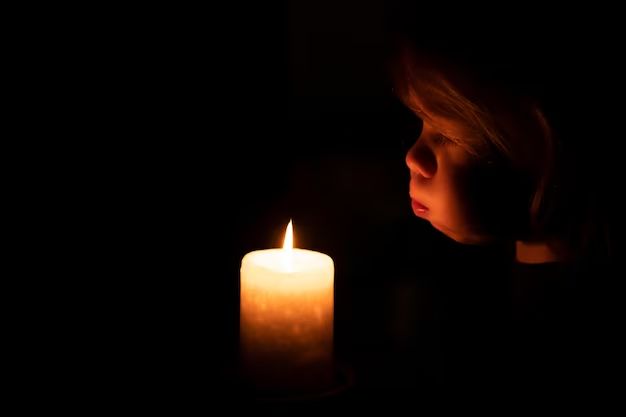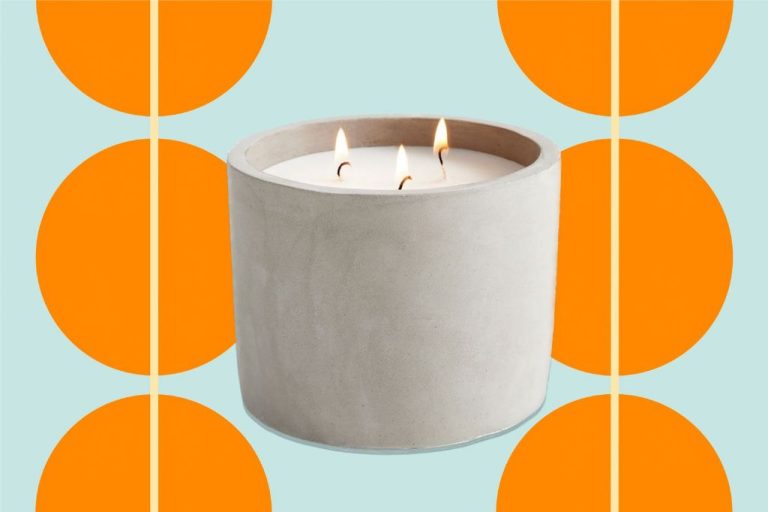How Long Is Too Long To Burn A Candle?
Candle burning is an ancient tradition that remains remarkably popular today, with candles found in over 90% of households. The warm glow and pleasant aroma of a burning candle can set the ambiance, provide calming sensory enjoyment, and add beauty and elegance to any space. Burning a candle can also serve a functional purpose, like providing light or repelling insects.
While candles are a beloved décor staple when burned responsibly, lighting them does come with some safety concerns. Burning a candle too long can lead to tunneling, dripping, smoking, and even potentially hazardous soot buildup. Knowing the right burning practices and when it’s time to extinguish or replace a candle is important for safety and maximizing the candle’s lifespan.
Why Burning Candles is Popular
Candles are popular for several reasons such as enhancing ambience, providing fragrance, and upholding traditions.
Candles have long been used to create inviting ambience and a cozy atmosphere. When lit, candles add a warm glow and pleasant scent to any room. Candles help establish a relaxing mood and romantic feel that many people enjoy while at home. Studies show that most people burn candles in living rooms, kitchens, and bedrooms [1].
In addition to ambience, candles are widely used for their fragrant properties. The scents from scented candles provide aromatherapy benefits that many find calming and uplifting. Popular candle scents include floral, fruit, spice, and essential oil blends that fill a space with pleasant fragrance.
Candles are also commonly used for traditions and rituals. Lighting candles on birthday cakes, anniversary dinners, holidays, and religious events is customary in many cultures. The tradition of lighting candles carries meaningful symbolism in these ceremonies and celebrations.
When is a Candle Burned Too Long?
There are a few telltale signs that indicate a candle has been burned for too long and should be extinguished and replaced:
Sooting – This black residue around the wick and edges of the candle is a sign that the candle is not burning cleanly. Soot can stain walls, ceilings, and other surfaces, and is an indicator that the candle needs to be trimmed or replaced. According to SCC Candle Co., sooting occurs when a candle burns for too long without being trimmed (https://www.scccandleco.com/blogs/candle-info/3-useful-signs-that-youre-burning-your-candle-all-wrong-sis).
Smoking – If wisps of smoke start coming from the candle, this likely means the wax pool has gotten too hot. The wick should be trimmed to 1⁄4 inch before lighting again. Persistent smoking can mean it’s time to replace the candle.
Mushrooming – When the wick mushrooms out instead of burning evenly, it’s a sign the candle has been burned too long. Trim the wick, let the wax reset, and try again. If mushrooming continues, replace the candle.
Cracking – Major cracks in the wax while burning or cooling is another indicator the candle has been overburned. According to Frostbeard Studio, continuous cracking means the candle needs to be replaced (https://www.frostbeardstudio.com/blogs/news/telltale-signs-it-s-time-to-replace-your-favorite-candle).
Tunneling – Deep holes or tunnels that form in the wax while burning signal the candle has been burned too long without being trimmed. It’s best to extinguish and replace tunneled candles.
As a general rule, most candle manufacturers recommend burning candles no more than 4 hours at a time. Allow the wax pool to solidify completely before relighting. Adhering to these guidelines helps prevent overburning.
Dangers of Overburning
Overburning a candle is dangerous for a few key reasons: it increases the fire hazard, releases toxic chemicals, and can ruin the candle vessel or holder.
The longer a candle burns, the more the wax pool deepens. This makes the flame height increase and risk the flame catching other materials on fire that are too close to the candle [1]. Overburning also makes the melted wax pool very hot. If the wax pool cracks, the hot wax can spill and cause burns or catch surfaces on fire.
Additionally, overburning candles releases more soot and chemicals like benzene and toluene into the air [2]. These chemicals are toxic and can cause headaches or irritate lungs if inhaled often from overburned candles. The smoke and soot from an overburned candle also creates more indoor air pollution.
Finally, allowing candles to burn too long can ruin the candle vessel or holder. The intense heat can crack or warp vessels like glass or pottery. Overheated wax can also discolor metal candle holders or candle jars.
Maximizing Candle Life
Proper care when burning a candle can help maximize its life and usage. Here are some tips for getting the most out of your candles:
Trim wicks as needed. According to candles.org, you should trim candle wicks to 1⁄4 inch before each lighting to prevent excess smoking and sooting. This helps the candle burn cleanly and efficiently.
Allow complete pooling. It’s best to allow the wax to completely melt across the entire top of the candle before extinguishing it. This helps prevent tunneling or uneven melting.
Burn in intervals, not continuously. Don’t keep a candle burning for extended periods of time. It’s better to burn a candle in shorter intervals of a few hours at a time. Continuously burning or overburning can cause unsafe conditions.
Consideration for Different Candle Types

The type of candle can impact how long it can safely burn. Factors like the wick, wax, and vessel material all play a role.
One key factor is the wick type. According to Candles.org, common wick types include cotton, linen, zinc-core, and wood wicks. Cotton and linen wicks typically allow for a longer burn time compared to zinc-core wicks. Wooden wicks can help candles burn cleaner and cooler. Selecting the proper wick thickness for the candle diameter is also important to prevent issues like tunneling.
The wax and oil composition impacts burn time as well. Beeswax and soy wax candles tend to burn slower and cooler compared to paraffin wax. Having a higher wax content versus oil allows for a longer burn. Vessel material is another consideration – candles in glass containers retain more heat versus metal tins, affecting burn times.
According to Côté Bougie, pairing the right wick, wax, and vessel combination helps maximize burn time for different candle types while minimizing risks of overburning.
Storing Candles Properly
To maximize the life and fragrance of candles, it’s important to store them properly when not in use. Here are some tips for proper candle storage:
Store candles away from direct heat or sunlight. Exposure to high temperatures can cause the wax to melt and the fragrance to fade more quickly. Find a cool, dry place like a cupboard or drawer to store candles. (source)
Keep candles tightly sealed in their original packaging or a resealable plastic bag. Allowing air exchange will cause the fragrance to dissipate faster. Tightly sealing candles preserves the scent.
Rotate your candle stock and burn older candles first. When storing multiple candles, put new purchases in the back and move older ones to the front to be used sooner. This rotation system helps ensure none are kept too long before use.
With proper storage methods, candles can last 6 months to a year before the scent starts to fade. Storing candles away from light and heat, keeping them tightly sealed, and rotating stock are simple ways to extend candle life and enjoyment.
Signs It’s Time to Replace a Candle
There are a few telltale signs indicating when it’s time to replace an old candle. According to candle experts, some indicators that a candle should be discarded include:
Sooty residue – If black soot starts accumulating on the sides and top of the candle glass, this is a sign the candle wick may be too large. Soot can dirty the air and surrounding surfaces, so it’s best to stop burning a candle when heavy soot appears.
Weak/drowning wicks – Over time, candle wicks can become weighed down by melted wax and stop standing upright. A wick lying flat along the top of melted wax will not burn properly. The wick may even become drowned beneath liquid wax.
Foul odors – If an old candle starts giving off bad smells when burned, this suggests the fragrance oils have expired. A rancid or chemical odor from a scented candle means it’s time to discard it.
Safety Tips
When burning candles, it’s important to follow some basic safety tips to prevent fires and other hazards:
Never leave a burning candle unattended. Blow it out if you’re leaving the room or going to sleep. According to the National Fire Protection Association (NFPA) [1], two out of every five home fires started by candles are due to leaving them burning unattended.
Have a fire extinguisher or baking soda nearby in case the flame gets out of control. The American Fire Safety Council recommends keeping an extinguisher within 15 feet of any open flame [2].
Keep candles at least 12 inches away from anything that can burn, like curtains, furniture, or books. The U.S. Fire Administration warns to never place candles near windows or doors where drafts can cause rapid, uneven burning [3].
Conclusion
In summary, while burning candles can be an enjoyable experience, it’s important to practice proper candle safety and burn times. Overburning candles past their ideal point can lead to issues like tunneling, sooting, and diminished scent throw. Following the manufacturer’s guidelines for burn times and wick trimming can help maximize candle life and avoid safety hazards.
Moderation is key – avoid burning a candle for excessively long periods in one sitting. Be mindful of signs it may be time to extinguish and relight later. Giving the wax pool time to solidify between burns allows for an even melt. With the right care, storage, and burning practices, candles can provide many hours of safe, fragrant ambiance.
The bottom line is to be an informed, safety-focused candle burner. Avoid overburning, maintain proper ventilation, trim wicks, and replace candles when needed. Responsible burning keeps the experience enjoyable for all.

